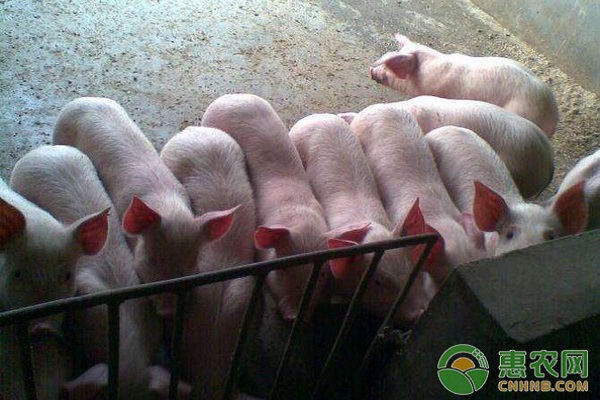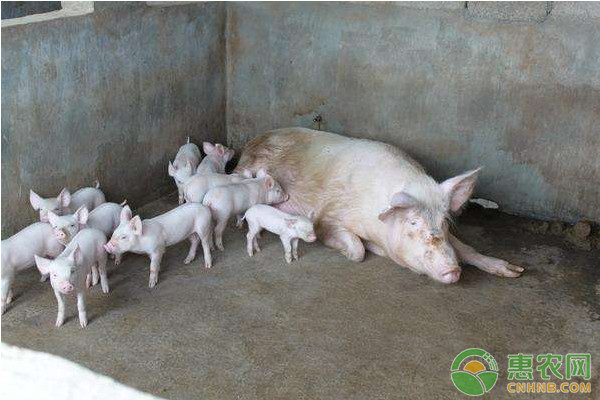In recent years, with the continuous development of pig scale, producers have paid more and more attention to sows. The breeding management and disease control of sows in the breeding period are related to the economic benefits of the farm. This article discusses the prevention and treatment of sow disease in breeding period, in order to provide a certain guiding role for pig practice. 1 Strengthen feeding management and reduce the probability of disease occurrence First of all, the spacious, bright, dry and ventilated pig house can not only reduce the incidence of sows, but also improve the reproductive performance of sows, which is conducive to sow estrus. Secondly, according to the physiological needs of different class sows during the breeding season, the temperature and humidity in the pig house are appropriately adjusted to reduce the cold and heat stress of the sow. Third, do regular disinfection of the pig house. Fourth, provide a balanced, well-matched feed. 2 Common diseases of sows during breeding period and their prevention and treatment 2.1 Porcine Reproductive and Respiratory Syndrome 2.1.1 Causes and symptoms Porcine reproductive and respiratory disorder syndrome, also known as blue ear disease, is a highly pathogenic infectious disease caused by the reproduction and respiratory syndrome virus of the genus Arthritis of the Coronavirus family. The disease spreads rapidly and has strong transmission. In the breeding period, the sows are infected with the disease, leading to premature birth, miscarriage, birth of stillbirth, weak babies, mummies, etc., which seriously affect the breeding process of the sow. 2.2.2 Prevention The main prevention and treatment measures for this disease are to establish a strict and effective health and epidemic prevention system, and regularly use the ELISA antibody detection reagent to carry out serological monitoring of breeding sows. Once the sow is infected with the disease, immediate measures should be taken to prevent the disease from spreading in the sow herd. In addition, the sows regularly inoculated with reproductive and respiratory syndrome inactivated vaccines or attenuated vaccines can also play a very good control effect. 2.2 Porcine pseudorabies 2.2.1 Causes and symptoms The disease is caused by pseudorabies virus, which can cause infertility and miscarriage of sows. The early death of piglets in sows occurs. Infection with the disease usually results in the sow not being estrus, or the sow is unable to conceive after mating, and for pregnant sows, it usually leads to miscarriage, birth to stillbirth and respiratory illness. 2.2.2 Prevention The main prevention and control measures are to do daily isolation and disinfection work to ensure the cleanliness of the breeding grounds. At the same time, the sows are vaccinated regularly, and the first time the sows are vaccinated against the pseudorabies vaccine or genetic engineering vaccine at the age of 10 weeks, 14 A second immunization is performed at the age of weeks, and every 4 months after 6 months of age, a long-term protective mechanism is formed. 2.3 Epidemic encephalitis B 2.3.1 Causes and symptoms The disease is caused by Japanese encephalitis virus, and the main vector is mosquitoes, which occur frequently during the warm season. After the infection, the breeding process of the sow is affected, and multiple infertility may occur. The pregnant sow will suddenly have a miscarriage after the infection, producing stillbirth, mummies and weak fetuses, and the sow has no obvious abnormal performance. The same fetus is also seen in the fetus. 2.3.2 Prevention There is no effective treatment for this disease, and it is best to eliminate it once it is diagnosed. Pay attention to the treatment of dead fetus, placenta and secretions; strengthen the elimination of mosquitoes, and pay attention to eliminate wintering mosquitoes. For pig farms in popular areas, the sows of 4 months old to 2 years old should be vaccinated against attenuated Japanese encephalitis vaccine 1-2 months before the start of mosquito activity, and the immunization period can be boosted once in the next year. Years have better preventive effects. 4 parvovirus disease 4.1 Causes and symptoms The disease is caused by porcine parvovirus, mainly affecting reproduction, manifested as embryo and fetal infection and death, infection in early pregnancy (30-50 days), manifested as embryo death or embryo absorption, sow infertility and irregular repetition estrus. In the middle of pregnancy (50-60 days) infection, the fetus dies and forms a mummified fetus. The fetus in the late pregnancy (60-70 days or more) has autoimmune ability, so it can resist viral infection. Most fetuses can survive, but they are poisoned for a long time. 4.2 Prevention The use of vaccines is recognized as the most effective way to prevent porcine parvovirus disease. In the production of pigs, each immunization before breeding, this can provide strong immunity to the sows, can be injected twice with inactivated oil emulsion, can be free from the interference of existing antibodies in the body. In addition, strict quarantine should be carried out at the time of introduction, and isolation and feeding management should be carried out. For sick and dead pigs and dirt sites, strict disinfection should be carried out and harmless treatment should be carried out. 5.1 Causes and symptoms The disease is a zoonotic and natural epidemic infection caused by pathogenic Leptospira. Sows have no obvious clinical symptoms after infection, and sometimes exhibit fever and no milk. Abortion and stillbirth occur 4 to 7 days after infection of Leptospira in 4 to 5 weeks of gestation, and the abortion rate is as high as 20% to 70%. Sows in the later stages of pregnancy will produce weak babies. The piglets will have difficulty standing, will not suck, and die within 1 to 2 days. 5.2 Prevention The prevention and control measures are mainly to disinfect the environmental sanitation of the pig house. Discover and treat infected pigs in time. Do a good job in rodent control to prevent pollution of water, feed and the environment; it is also forbidden to keep dogs, chickens and ducks. In addition, inactivated vaccines can also be used to immunize pigs. The above is all the contents of today, welcome all the farmers to come to Huinong.com to learn more, and more exciting content is available in Huinong.com! medical products Anesthesia Medical Co., Ltd. , https://www.trustfulmedical.com

